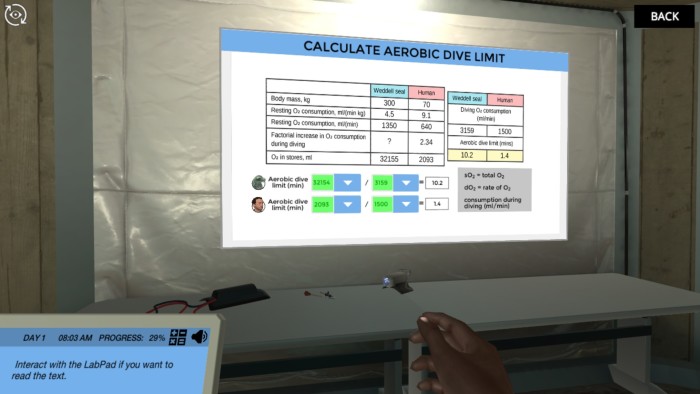5 Creative Ways to Teach Cardio-Respiratory Physiology to Make Learning Fun

Cardio-respiratory physiology is an essential component of any physiology class. Some organisms, like the Weddell seal, demonstrate far superior cardio-respiratory physiology than humans. Such organisms can prove to be quite useful in improving our understanding of biological mechanisms that optimize oxygen consumption. But educators must focus on communicating these concepts to their students in ways that make learning fun and productive. Here, we list five creative ways to teach students cardio-respiratory physiology that make it an engaging topic to learn.
1. Engage Students with Interactive Models
Interactive models can provide valuable insights into cardio-respiratory physiology. With such models, students can learn difficult scientific concepts in their own safe bubble. Plus, they can pursue the topic repeatedly to tighten their grasp of the subject matter.
For example, you can show your students different videos of seals diving and provide them with some basic parameters of the dive. They will then have to calculate the aerobic dive limits and share what these values mean for the seal. You can also conduct an interactive discussion with audiovisual aids, where students must think about the type of adaptations seals must have evolved to be able to dive the way they do.
2. Increase Student Engagement Through Games and Activities
Gamification of digital educational material promises greater student engagement with the subject matter. Better engagement through games and activities means improved learning and retention of knowledge.
Take Labster’s cardio-respiratory physiology simulation, for example. In our simulation, the students take a trip to Labster’s virtual research center in Antarctica. What’s even more exciting is that this simulation is riddled with mini-games. The students must accurately calculate a number of cardio-respiratory parameters to collect the pieces of a larger puzzle. Once they have all the pieces, they get to accompany a Weddell seal on an interactive dive.

3. Infuse Technology into Lessons
Modern technologies like simulation, animation, and virtual reality make even the most dangerous biogeographical niches accessible in a safe environment. This can be especially useful when teaching topics like the cardio-respiratory physiology of an Antarctic seal.
For example, Labster’s cardio-respiratory physiology simulation takes students into the icy depths of the Antarctic Ocean through animation and simulation. The students monitor the oxygen consumption and blood lactate levels of a Weddell seal as it dives into the ocean. They also learn about the differences between human and seal physiology during the process of deep-sea diving. Further, the students learn how to use graphing methods to correlate metabolic and heart rates with type of exercise.

Discover Labster's cardio-respiratory physiology virtual lab today!
4. Inspire Students Through Career Exploration
All topics of study are closely linked to multiple career opportunities that they shape and support. If your students knew about these professional opportunities, they would be more invested in learning the subject matter.
Use career exploration to inspire your students to learn about cardio-respiratory physiology. For example, tell your students how marine biologists require the knowledge of cardio-respiratory physiology to efficiently navigate underwater habitats. Discuss how medical device engineers can use insights from species with highly efficient cardio-respiratory physiology to develop devices that are better at addressing respiratory and circulatory issues in human patients.
5. Connect Topic to Real-World Applications
How seals manage to remain underwater for so long may not excite all students. But knowing the human applications of understanding a seal’s cardio-respiratory physiology will. Talk to your students about the real-world applications of learning cardio-respiratory physiology.
For example, tell them about how the insights from seal physiology can help improve human diving physiology. Discuss how this knowledge can help in the resolution of diving-related illnesses and oxygen management issues in critical patients. Talk to them about how our understanding of a seal’s cardio-respiratory physiology can help us develop better, more energy-efficient submersibles and underwater robots.
Final thoughts
Cardio-respiratory physiology is the very science of how we breathe, generate energy, and survive in different environments. There is a need to develop methods that help teach this crucial topic in an exciting and engaging manner. The five creative teaching methods we have listed here can help you educate your students about cardio-respiratory physiology and what we can learn about it from other species.





